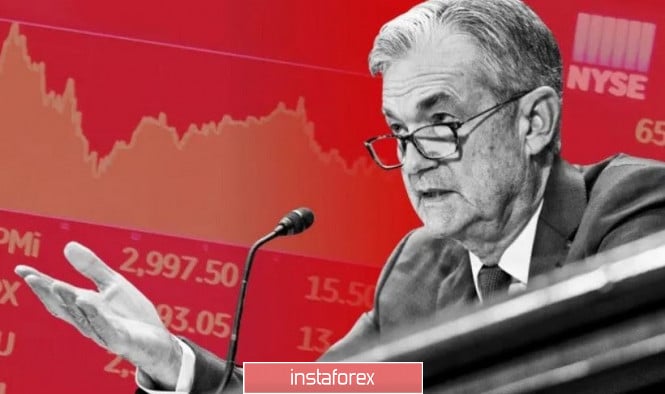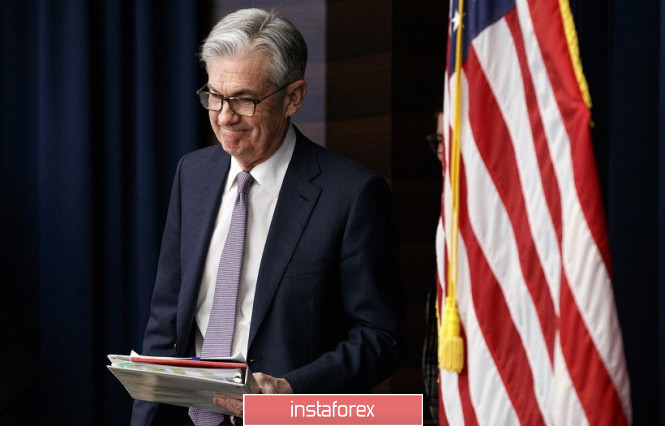The euro-dollar pair reacted minimally to the results of the January meeting of the Federal Reserve. However, the Fed also did not provide any reasons for volatility. The first meeting this year turned out to be completely "passing", contrary to the expectations of some experts. In general, the January meeting is almost completely similar to the December meeting. The same wording, the same intentions and the same decisions. Therefore, the US currency remained indifferent to yesterday's events, continuing to focus on the external fundamental background.

The US regulator expectedly left all the parameters of monetary policy unchanged. The probability of this scenario was 100%, so the main attention of traders was focused on the key of the accompanying statement and the rhetoric of Jerome Powell. The text of the final communique nearly did not differ from the December one. However, there are still some differences. First, the regulator increased (from 1.55% to 1.6%) the rate on surplus bank reserves (IOER). The overnight repo rate was also increased (from 1.45% to 1.5%). At the same time, the Fed extended REPO operations until the end of April. All these adjustments were technical in nature, so they did not cause a stir in the market.
Secondly, there have been minimal changes in the wording. If the Fed characterized consumption growth rates as "high" in December, then it lowered its assessment to "moderate growth" in January. It is worth recalling that the main index of expenditures on personal consumption shows a downward trend (year on year), so the regulator only reflected the current state of affairs.
The rest of the Fed's accompanying statement was identical to the December one. The regulator "closed its eyes" to the rather slurred Nonfarm (especially in the context of wage growth), noting that "the labor market continues to strengthen, while the economy as a whole is growing at a moderate pace." The Fed has traditionally been worried about the weak growth in the export sector, as well as the level of consumption. According to the Fed, the weak point is inflation indicators , which are still below the target two percent level. At the same time, the regulator noted that the indicators of inflationary expectations, which are based on surveys, "almost did not change their structure." Summing up the January meeting, the Federal Reserve confirmed the preservation of a wait-and-see attitude, emphasizing the effectiveness of current policy. It is noteworthy that in the accompanying statement, the regulator did not reflect the signing of the first phase of the trade deal, nor the hysteria with the spread of coronavirus. In this context, the central bank limited itself to only one vague phrase that "the Committee continues to monitor the impact of incoming data, including events in the world."
Thus, members of the Fed did not provide any reasons for volatility. On the one hand, they did not succumb to general panic (for example, it might have been worried about a possible slowdown in the global economy due to the Chinese pneumonia epidemic). On the other hand, the Fed actually ignored the very alarming signals that came in January from macroeconomic reports. In particular, according to the latest data, the average hourly wage level fell to 0.1% on a monthly basis - this is the worst result since September last year, when it fell to zero. In annual terms, this indicator rose by only 2.9% - this is also a kind of anti-record (the weakest growth rate since July 2018).

But the fact remains: the US regulator remained faithful to its December guidelines. At his press conference, Powell repeated the main points of the accompanying statement, supplementing them with his comments, but without saying anything significant. He noted that despite a trade ceasefire, uncertainty factors still persist, and coronavirus joined in with these factors. However, Powell did not assess the risks and make any predictions about the possible consequences. As for the dynamics of macroeconomic statistics, the Fed chief expressed surprise that with such low unemployment, the growth rate of wages remains extremely weak. By the way, Janet Yellen spoke about this at the time when she was the head of the Federal Reserve - in her opinion, such dynamics negatively affects inflationary processes. But Powell remains optimistic in this context - according to him, inflation will reach the target level "in the near future". The rest of his phrases were "on duty" in nature: the theses voiced boiled down to the fact that the central bank will continue to "closely monitor conditions in the money markets" and will respond if necessary.
Thus, the US regulator made it possible for the dollar to continue to focus on the external fundamental background. The Fed did not put pressure on the greenback, but also refrained from hawkish notes in its rhetoric. The focus of the market has returned to the theme of the spread of coronavirus, which continues to pace the planet. The number of infected at the moment has reached almost eight thousand, while the death toll has reached 170 people. According to experts, the peak incidence is still ahead, so the dollar will still prove to be a defensive tool. With an increase in anti-risk sentiment, the EUR/USD pair may return to the 9th figure, reaching in the near future the strongest support level of 1.0940 (the lower line of the Bollinger Bands indicator on the weekly chart).
The material has been provided by InstaForex Company - www.instaforex.com